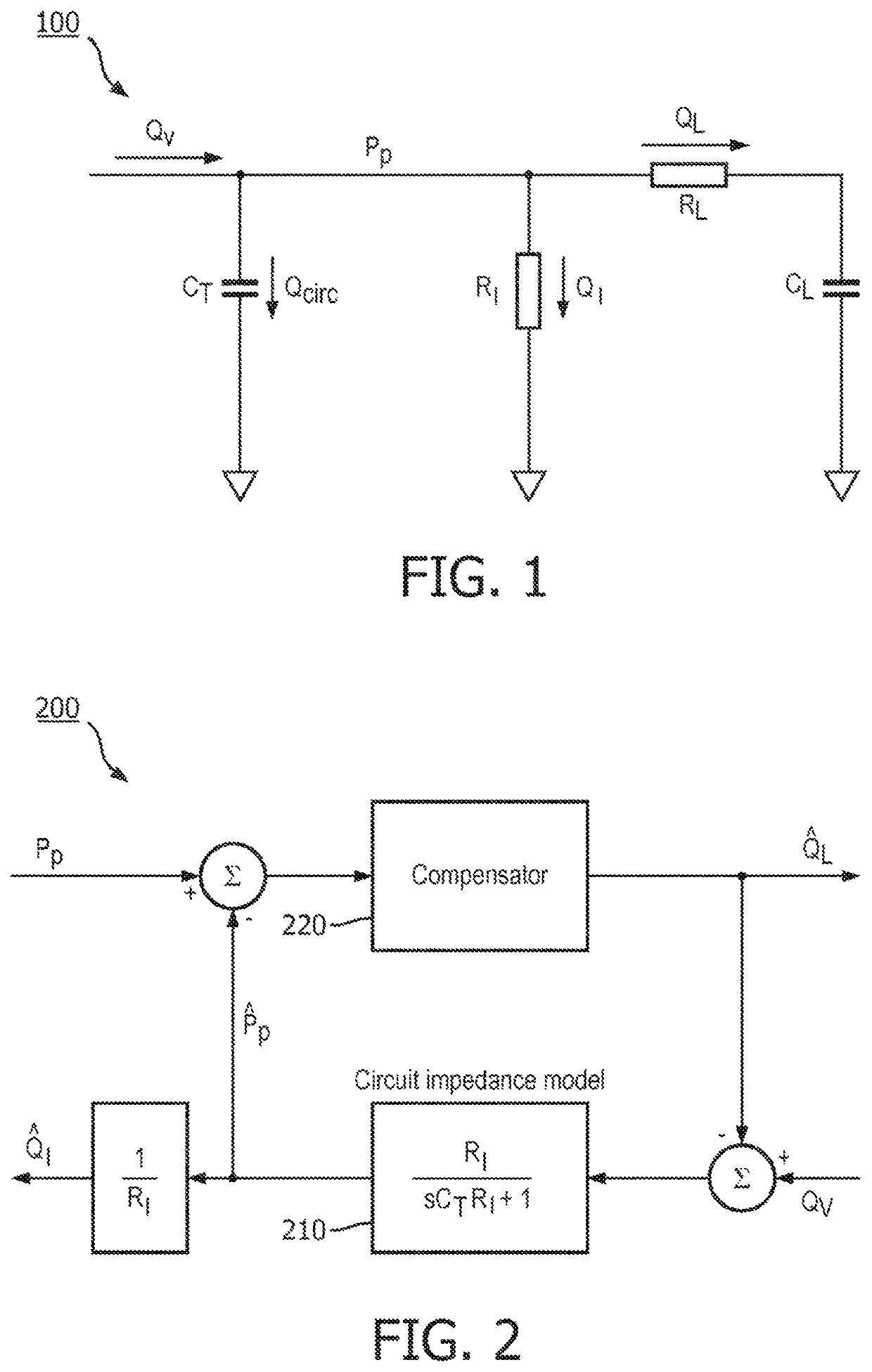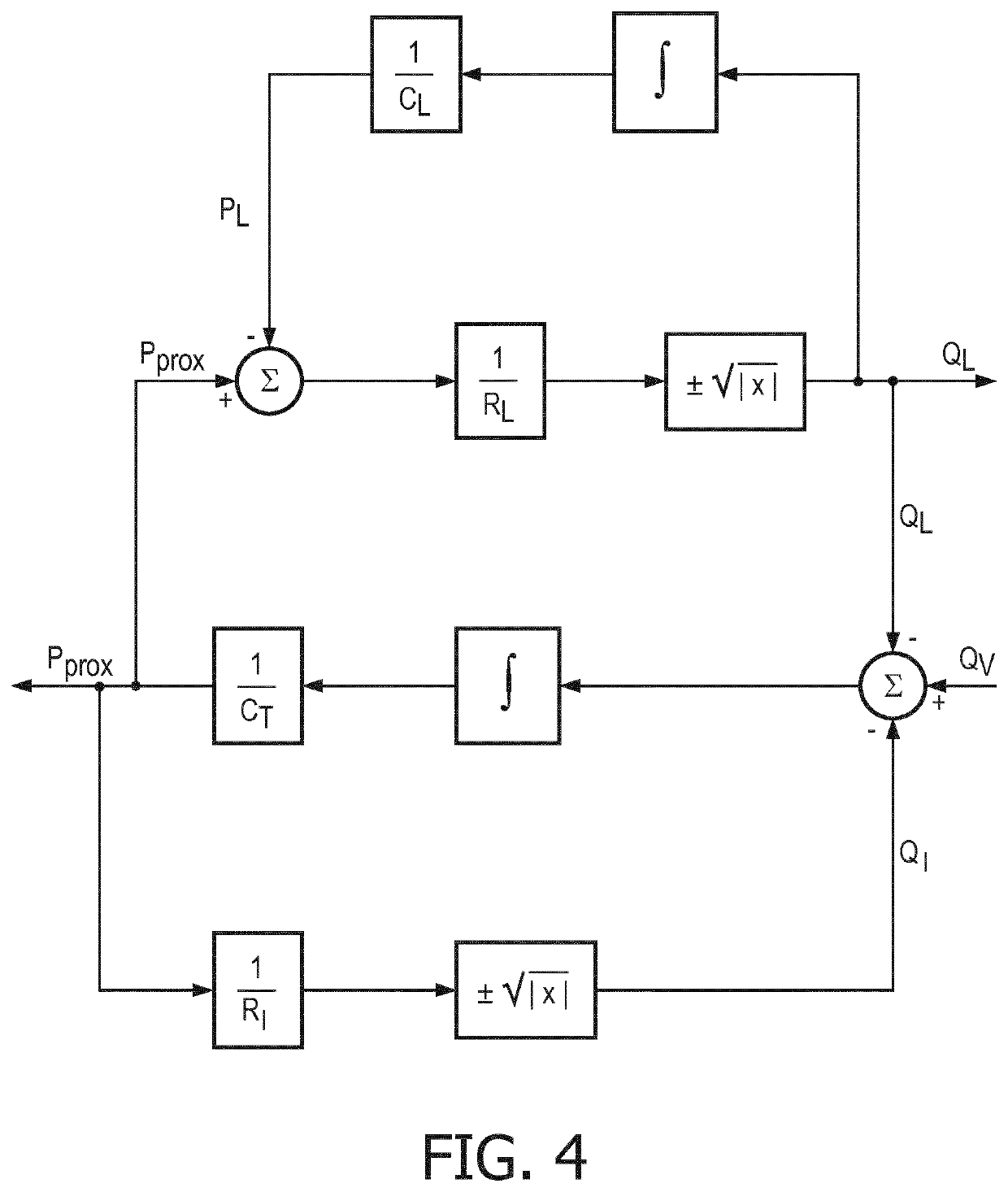Methods and systems for patient airway and leak flow estimation for non-invasive ventilation
a leakage and patient technology, applied in the direction of respiratory masks, medical devices, other medical devices, etc., can solve the problems of significant risks, tissue abrasion, infection, sedation of patients, and significant problems with sensors, etc., to achieve the effect of reducing the risk of infection
- Summary
- Abstract
- Description
- Claims
- Application Information
AI Technical Summary
Benefits of technology
Problems solved by technology
Method used
Image
Examples
example
Integration of Estimated Airway Flow and Determination of the Airway Flow Bias Metric
[0104]According to an embodiment, the following obtains the net breath volume:
[0105]VLinst(n)={0.001if(StartOfInh(n-1)==1)OR(QLreset==1)OR(fast(n)==1)ΔTQ^LNIV(n)60+VLinst(n-1)otherwise(26)
This says that the net breath volume calculation is reset one step after the start of inhalation (a one clock event) or otherwise held in reset during a fast bias correction maneuver. And the net volume is latched at the start of inhalation:
VL(k)=VL inst(n) if StartOfInh(n)==1 (27)
From the net breath volume obtain the mean breath flow by dividing net breath volume by the breath duration:
[0106]Q_L(k)=VL(k)TB(k)(28)
next determine the mean (actual) breath pressure:
[0107]ΣPproxInst(n)={0.001if(StartOfInh(n-1)==1)OR(QLreset==1)OR(fast(n)==1)ΔTPprox(n)+ΣPproxInst(n-1)otherwise(29)ΣPprox(k)=ΣPproxInst(n)ifStartOfInh(n)==1(30)
and the average pressure over the brea...
PUM
 Login to View More
Login to View More Abstract
Description
Claims
Application Information
 Login to View More
Login to View More - R&D
- Intellectual Property
- Life Sciences
- Materials
- Tech Scout
- Unparalleled Data Quality
- Higher Quality Content
- 60% Fewer Hallucinations
Browse by: Latest US Patents, China's latest patents, Technical Efficacy Thesaurus, Application Domain, Technology Topic, Popular Technical Reports.
© 2025 PatSnap. All rights reserved.Legal|Privacy policy|Modern Slavery Act Transparency Statement|Sitemap|About US| Contact US: help@patsnap.com



